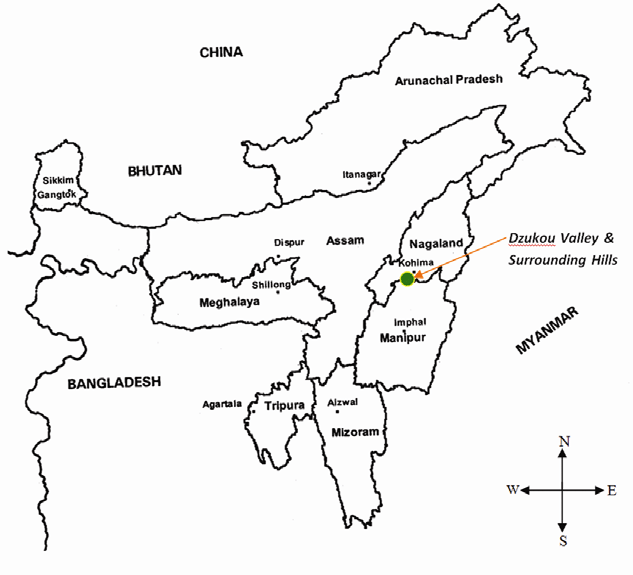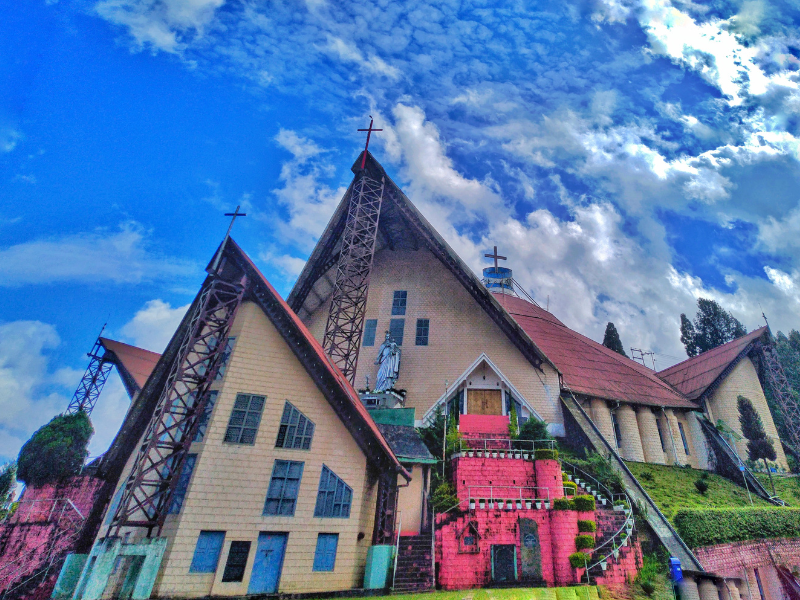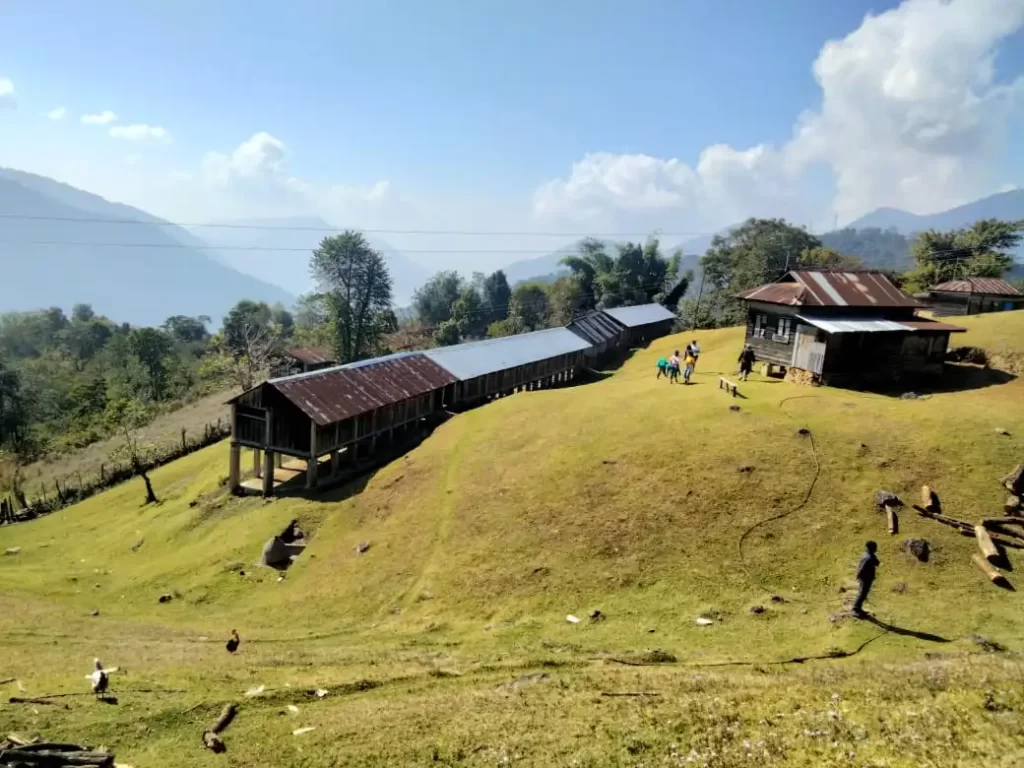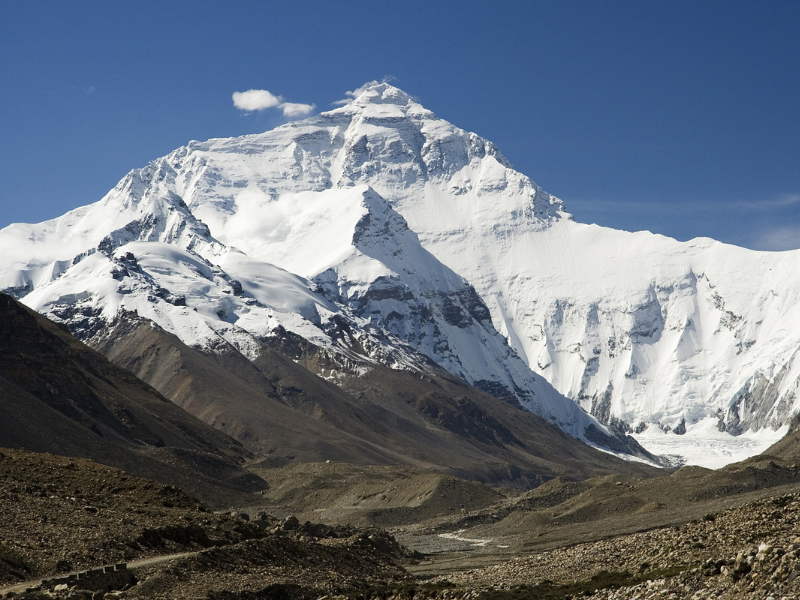Nestled in the heart of Northeast India, Dzukou Valley stands as one of the region’s premier travel destinations, captivating visitors with its untouched splendor. Renowned for its undulating hills, rich biodiversity, and surreal landscapes, this valley offers unparalleled communion with nature. Recognized as one of the largest tourist attractions in the area, its allure lies not just in the scenic beauty but in the mystical interplay between the weather and the valley’s ever-changing moods. Before embarking on your journey through Dzukou Valley, a quick check of the weather today can help you prepare for the day ahead, ensuring a safe and enjoyable experience amidst its ever-changing landscapes.
Dzukou Valley Discovered
The Geography of the Dzukou Valley

The Dzukou Valley is situated on the border between Nagaland and Manipur. This geographical marvel, nestled in the southernmost reaches of Nagaland’s Kohima district, predominantly lies on the Manipur side, covering an expansive area of approximately 27 sq. Km. Situated at an average elevation of 2,452 meters above sea level, Dzukou Valley’s isolation is its charm, keeping it beautifully secluded from the bustling world below.
The valley is crowned by Mt. Iso (Mt. Tenipu), standing tall at 2994 meters as Manipur’s highest peak, adds to the valley’s allure with its imposing presence. The journey to Dzukou Valley-by road and trek-unfolds into an adventure, crossing much longer distances to enjoy its secluded beauty despite being just 14 km from Kohima’s central ground.
Why Dzukou Valley is a Must-Visit Destination?
The valley’s biodiversity is a spectacle in itself, with rare species of plants and wildlife calling it home. The landscapes here, ranging from rolling hills carpeted with exotic flowers to meandering streams cutting through the valley, are a testament to the valley’s natural beauty. The cultural significance of the area, preserved through centuries, adds another layer to its charm, making Dzukou Valley a treasure trove of natural and cultural heritage.
The Best Time to Visit the Dzukou Valley
In the Summer Weather
During the summer (April – May), Dzukou Valley comes alive with a vibrant palette of wildflowers, transforming the landscape into a vivid tapestry of color. This period is devoid of the leeches that are prevalent during the wetter months, making it an excellent time for trekking and exploration. The blooming season, peaking in the early weeks of July, presents an ethereal view of the valley, festooned with an array of nodding wildflowers. However, visitors in July should be mindful of the onset of the monsoon, which brings slippery trails and the return of bloodthirsty leeches, despite the valley’s continued beauty.
In the Winter Weather
Winter (November – March), on the other hand, unveils a different facet of Dzukou Valley’s charm. The landscape shifts from vibrant greens to a more subdued straw color as the chlorophyll in the dwarf bamboo recedes. The air, crisp and cold, contrasts sharply with the gentle warmth of the winter sun. The temperature during the day hovers around 10°C, but at night it’s significantly cooler, often dropping below freezing. This season gifts early risers with the magical sight of delicate ice crystals adorning the foliage, a scene that photographers covet for its unique beauty. Additionally, the absence of leeches makes winter trekking a more comfortable endeavor.
What to Pack for Your Trip?
To cope with the valley’s ever-changing weather, layers become essential, allowing flexibility to match the warmth of summer’s bloom or the chill of winter. Furthermore, waterproof gear is crucial during the monsoon season and the damp trails of early winter, protecting against unexpected showers. With this preparation, visitors can fully experience the valley’s seasonal wonders, from the floral extravaganzas of summer to the serene, frost-covered landscapes of winter, ensuring a deeply memorable experience.
Today’s Weather and Its Implications

How to Predict the Weather Today?
To plan your day, especially in places like Dzukou Valley, checking the weather today is crucial. Use reliable weather apps or websites for instant updates on conditions like rain, temperature, and wind. This simple step ensures a safe and enjoyable outdoor experience, keeping you prepared for anything the day brings.
How to adapt to sudden weather changes?
The weather today can significantly impact your plans when you live in a dynamic environment like the Dzukou Valley. It is crucial to be adaptable. Keep a close eye on the day’s weather forecast, even after starting your day. There can be sudden changes in weather conditions, such as sudden rainstorms or a sudden drop in temperature. Make sure you have a versatile gear arsenal, including waterproof clothing and layers, so that you can navigate these changes comfortably. No matter how quickly the weather today changes, your time in Dzukou Valley remains uninterrupted and enjoyable, allowing you to experience the adventure that comes with nature’s unpredictable nature.
Must-Visit Spots in the Dzukou Valley
Exploring the Dzukou Valley reveals a myriad of stunning locations that captivate visitors with their natural beauty and cultural significance. Among these, three standout destinations are essential to any itinerary
Kohima Cathedral Church

Kohima Cathedral, blending Naga architectural styles with modern design, commemorates peace and reconciliation. Built with contributions from Japanese citizens as a tribute to WWII soldiers, it features one of Asia’s largest crosses. The cathedral, a symbol of unity, also hosts reconciliation meetings, marking its significance beyond a religious landmark.
Dzuleke

Dzuleke, a serene hill town village near Dzukou Valley, is celebrated for its untouched natural splendor and unique wildlife, including the rainbow trout. It is situated 40 kilometers from the city center. You can interact with the welcoming locals and enjoy traditional foods, such as fresh crabs and Binni rice, or try Bhoot Jalokia, one of the world’s spicy chillies. In Dzuleke, you can experience a breathtaking combination of natural beauty and cultural immersion.
Mount ISO (Mt. Tenipu)

Mount Tempü, the second highest peak in the Barail Range, stands as a majestic peak within the Barail Range at the border of Manipur and Nagaland. It is located in the western part of Viswema, where climbers can begin their ascent. Winters on Mount Tempü are adorned by a white cloak of snow as it is surrounded by the vibrant communities of the Mao Nagas and Maram Nagas. For adventurers and nature lovers alike, the peak offers a distant, yet stunning view of Loktak Lake on clear days, adding to its appeal.
Conclusion
Dzukou Valley is a best tourist place for adventurers and solitude-seekers in northeast India. This remarkable valley offers an unparalleled blend of adventure, peace, and stunning vistas, ensuring a memorable experience even during its peak seasons. Currently preserved in its near-pristine state, Dzukou Valley is a treasure waiting to be explored. However, with the looming potential for increased tourism, the essence of Dzukou Valley’s tranquil and untouched beauty might face changes. To preserve its unique charm, a visit sooner rather than later is advisable to experience its unspoiled allure.
Want to know more about travel? Be sure to watch out for us! Our mission is to provide you with lively content that inspires you to take on your next adventure. Join us on the journey – stay tuned!




